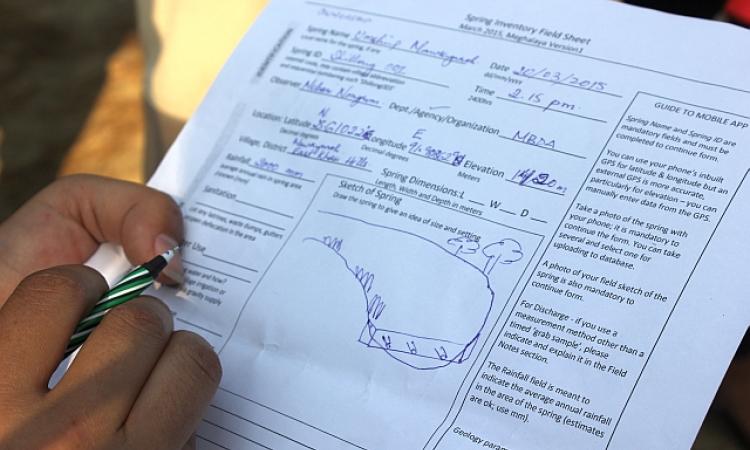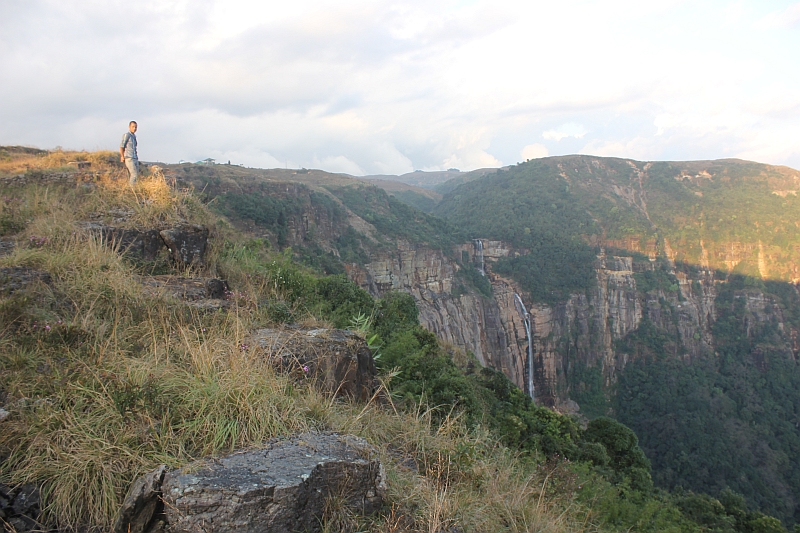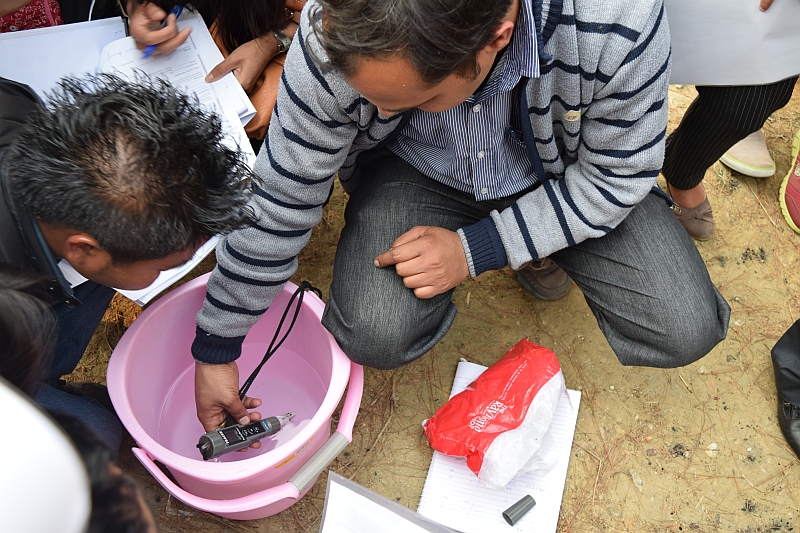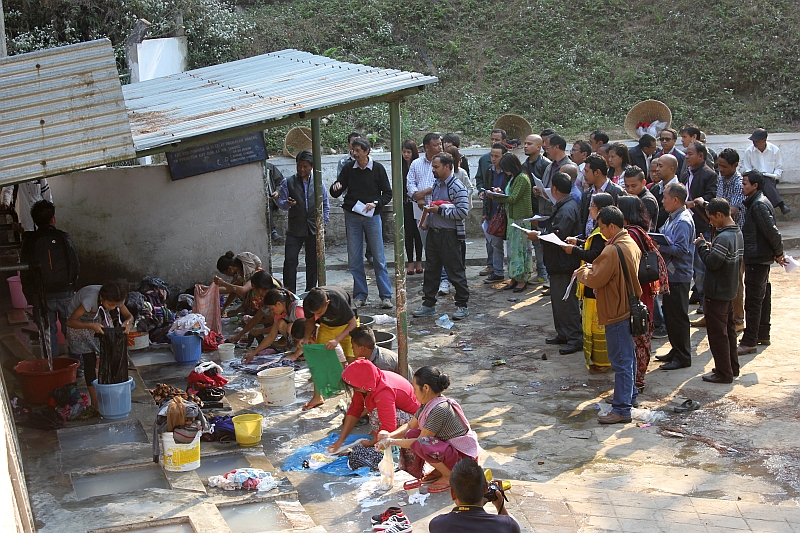
World Water Day 2015 proved to be significant to the people of Meghalaya. That day is when the state's Springshed Management Initiative was launched. The Chief Secretary, PBO Warjri said that the people of Shillong have traditionally depended on springs but in recent years, land use changes and the installation of borewells have led to the depletion of natural springs.
The inauguration meeting began with an overview of springs and hydrogeology, stories from Springs Initiative partners, a report on the previous day’s training and voices from the field officers about their experiences around the State. The latter half of the day consisted of meetings with decision makers, including Shri Mishra, Principle Secretary, Water Resources Department, to plan events moving forward.
Before this inauguration, a training session on spring sensitisation and methods for mapping and monitoring was conducted for field officers and department heads of numerous agencies connected with natural resources in the state. This covered both the theory and practise of the importance of springs, hydrogeology, discharge measurement, water quality, field sheets, uploading to the database and using the mobile application.
The trained field staff – more than 30 – will now disseminate learnings to an additional 215 people, each of whom is expected to map 15 springs before the rains in May. This exercise should yield some 2000-4000 spring data points within a few months. The data collected w ill help Meghalaya plan springshed protection activities and will constitute a scaled-baseline for the programme. Speaking of the training programme, PBO Warjri says, “We can have an army of volunteers to monitor and feed data and have reliable data on the State”.
ill help Meghalaya plan springshed protection activities and will constitute a scaled-baseline for the programme. Speaking of the training programme, PBO Warjri says, “We can have an army of volunteers to monitor and feed data and have reliable data on the State”.
Dr. Jared Buono, a hydrogeologist connected with the Springs Initiative, was part of the resource group which conducted the training. He spoke with the India Water Portal about the Meghalaya programme.
Can you tell us more about the Springs Initiative?
The initiative is a group of organisations around the country who happen to be working independently on springs but doing a lot of the same work in parallel. Arghyam had the idea to bring everyone together and see if we can leverage each other's strengths and learn from each other. It's been going very well. There have been some excellent connections and cross-learning.
The case for community-based spring conservation centres around a scientific approach to groundwater. It has been made stronger, since everyone has passed through the same place -- this has been everybody's experience in different parts of the country.
The initiative is less than a year old, but we've already had a lot of successes, including this connection with the Meghalaya government. Different partners with the Springs Initiative are coming together to help the government of Meghalaya to get its springs programme up and running.
What does the Meghalaya springs programme include?
The Meghalaya government has embarked on a very ambitious plan for water and livelihoods, the Integrated Basin Development Livelihood Programme. The springs conservation is a part of that. It is at the initial stages now, but they are looking at doing something at scale. They want to ramp up quickly and cover the entire state.
The state of Sikkim took seven or eight years and went very carefully. That's not a bad thing; they figured out a lot of stuff along the way. Because Sikkim did that, there is some precedent and some analogue Meghalaya can borrow from. Meghalaya might be able to skip some of the initial figuring things out piece.
I t also looks like the hydrogeology and awareness of springs will be institutionalised in the state. For example, in their curriculum in the conservation training institute, and within specific departments like the soil and water conservation department, everyone is going to have some springs awareness and technical training.
t also looks like the hydrogeology and awareness of springs will be institutionalised in the state. For example, in their curriculum in the conservation training institute, and within specific departments like the soil and water conservation department, everyone is going to have some springs awareness and technical training.
Most of what the springs initiative is going to be doing is helping with that plan, but also doing capacity building. For example the training we just did was mapping and monitoring of springs, because right now nobody knows how many springs there are.
How are Panchayati Raj institutions and tribal governments involved in this initiative?
The village councils are getting involved in the much larger water-livelihoods programme that's going on; springs is just a small piece of the whole thing going forward. The plan as I understand it is that village councils are going to be part of a steering committee that will take responsibility for how natural resources are managed within a village. Some of those people from the village councils will be trained as para-professionals by us.
The training in March was just a basic training for government officials of how a spring works. Some of the people trained here as well as some members of the village councils will be coming back for a training of master trainers. This will include several weeks of courses on spring management over the next year.
What do you find most exciting about this initiative?
Nothing's been done at this scale before. They want to survey the entire state and we should have a couple of thousand data points within the next two months. This is rarely done anywhere; it is probably one of the largest springs mapping exercise in the world and certainly in India.
What are the special efforts that you think need to be made in Meghalaya to ensure the success of this initiative?
More than 90% of the land is owned by private individuals. That means that the government has very little leverage to mandate or regulate the use of resources directly. The community has to be on board and take the decision to do something. Getting around that challenge requires considerable knowledge sharing with the community; land owners need to be thoroughly convinced of the value of springs management.